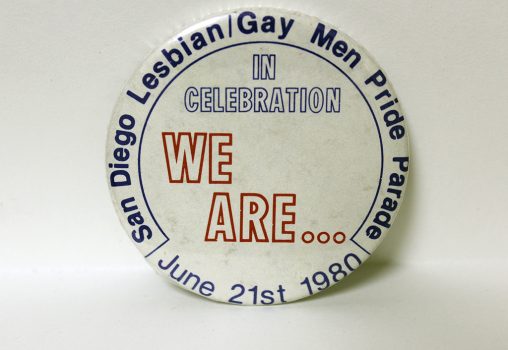
In January of 1980, the Center for Social Services was renamed the Lesbian and Gay Community Center, a move spearheaded by lesbians to address sexism. The success of the Gay Pride Picnic and Olympics the previous year seems to have influenced the 1980 Pride parade. That year the event took on a tone more celebratory than political, and was referred to as a parade instead of a march. This detail upset many, and a large part of the lesbian community broke from the Lesbian/Gay Men’s Pride Alliance to form the Lesbian Solidarity March, which took place on June 13th. The Lesbian Solidarity March focused on issues of sexism and the unique needs of gay women. Over 200 people attended the march through downtown with “lavender candles blazing and heads held high.”
The Pride parade took place the following week on June 21st, and attendance suffered due to the Lesbian Solidarity March. Seven hundred people participated in Pride, resulting in the first decline in attendance since 1974. Nevertheless, the event had a joyful tone, and floats, clowns and a color guard were parade features for the first time. The “Iron Spur” award for best float was introduced, inspired by the float of the local tavern/restaurant of the same name, which included a stagecoach and a 15-foot-tall spur. SDPD escorted the parade with two squad cars and 10 motorcyclists. The rally began with a performance from the Stonewall Singers. Speakers at the rally included Grand Marshals Bruce Voeller, president of the Mariposa Foundation, and Judy Carton, president of Dignity San Diego.
That same year, a group of people formed the first gay rights group in Tijuana. Their initial purpose was to enlist the support of American citizens against the U.S. Immigration Act prohibiting entry into the U.S. by foreign homosexuals.
